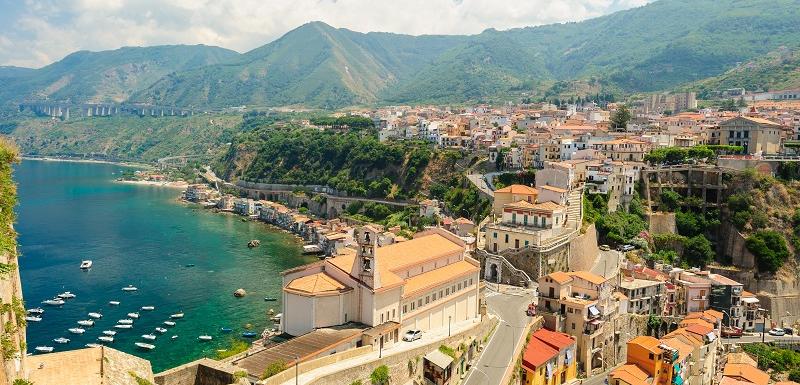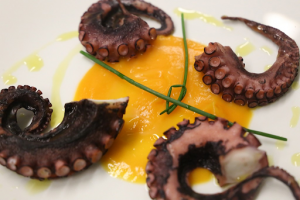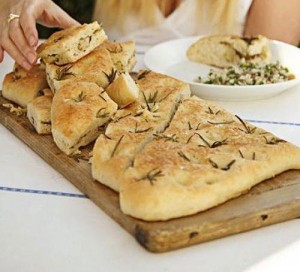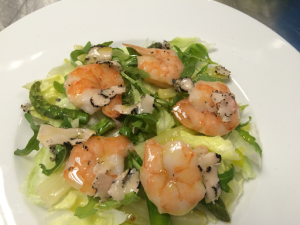Some of the first local tribes have settled on the lands of today’s Italian region Calabria about three thousand years before the new era. These were the Bruti and Lucani. They were of Italian origin. Later on, these tribal communities were replaced by the ancient Greek settlers – this happened around 800 years BC. They also colonized several Italian regions: Calabria (todays reggio di Calabria), Kroton (today’s Crotone) and Locri, and they named the conquered territories Magna Grecia – in translation – „Great Greece”.
Historical facts show that later on Calabria became part of the Roman Empire, then of Byzantium, and in the Middle Ages it was conquered by various invaders – Spaniards, French and others. The Arabs couldn’t conquer the entire Calabria but they managed to control certain villages there. They brought the lemons, oranges, eggplant, artichoke and raisins in the region.
The rich history, the movement of different communities and people here ultimately lead to a significant heritage – cultural and historical, and especially culinary, that is why the cuisine of Calabria is so varied and eclectic. All this is combined with the natural resources such as the fertile soils and fishing opportunities along the coastal areas.
But for most of its history, Calabria was far from being an aristocratic region. Its inhabitants have gained their livelihood mainly through agriculture and fishing, that is why the tradition of cucina povera is so common here (in translation means cuisine of the poor, village people). This means that in the region you can try some of the simplest but most delicious culinary temptations in Italy. For these reasons, Calabria is also famous for its high degree of creativity in the kitchen and abundant variations that include eggplants, tomatoes and fish.
Nowadays Calabria can be proud of the numerous recipes and technologies inherited over the centuries from the various settlers and conquerors in these lands. All of them have left a piece of their traditional cuisine, including various food processing technologies, such as preserved recipes from the ancient Greeks.
Calabria is located in the southernmost part of Italy and is surrounded by two seas – Tyrrhenian Sea and Ionian Sea.
That’s why seafood delicacies are an essential part of the local culinary traditions. These foods can be consumed both fresh and canned, for example marinated octopus, salted anchovies, anchovies in olive oil with pepperoncino and so on. Among the region’s emblems is the tuna fish with mushrooms, as well as the swordfish – in Italian pesce spada, steamed, grilled or stuffed with mushrooms.
A large part of the territory of Calabria is covered with hills and mountains, but there is a wide variety of fruits and vegetables in the region. For centuries, the livelihood of the local population includes horticulture and stock-breeding.
People in the region are proud of their dairy products, especially the cheeses. Among them are, for example, Caciocavallo Silano (cow’s cheese from the mountain massif Sila) and Provola Silana – cheese in the form of an earthen jar prepared according to a special ancient recipe, as well as pecorino del Pollino – very popular cheese of sheep’s milk which maturation period of nearly one year, and pecorino del Monte Poro – considered one of the best local cheeses, it is made of sheep’s milk and when the product has matured for a long period it has specific orange color. Other famous cheeses are the smoked ricotta, fresh goat cheese caseificio stirparo and the cream cheese juncata.
Calabria is also famous for its incredibly delicious bread. Pane di Cerchiara, named after the town from which it originates, for example, is prepared in large loafs weighing between 2 and 4 kilograms, which have a characteristic hollow in the middle. Almost every place in the region has its own traditional bread recipe, but all people like the loaf – round bread with a hole in the middle, which can be cut and filled with various types of stuffing, as well as the taralli – small doughy products with round shape, which can be salty (without anything else), or prepared as an abundant dessert, using a syrup or frosting.
The chili – called peperoncino in Italian, is often found in local cuisine and not just like a simple flavor. A mixture of dried crushed chili in olive oil is served as a spice to almost every dish in the region. In the past, it was believed that chili has the ability to strengthen the immune system of the human organism to such an extent that it can overcome malaria. Nowadays, it is playfully called the „natural Viagra“.
Peperoncino Calabrese is also present as the main ingredient of the hot sauce licurdia, and the dried red peppers are used both as culinary ingredient and as decoration of the houses. Various appetizers, sauces, toppings and cans are made of the peppers such as the hot sauce bomba Calabrese, which is characteristic of the region.
The traditional recipe for bomba Calabrese includes eggplants, sweet and hot red pepper in proportions 5 to 3 to 1, some garlic, basil, anchovies for aroma, carrots and olive oil. The ingredients are cleaned, prepared, placed in a pot and salted, then they have to be left there for 24 hours, after which the excess moisture should be removed from the products.
The mixture should be blended – but do not use very powerful blender because the „bomba“is far more delicious when the pieces of the peppers and eggplants can be felt with the tongue. So prepared, it could already be closed in jars and boiled, and then used for winter supplies.
Diamante in the Cosenza province
In the coastal Calabrian town Diamante in the Cosenza province, there is even an annual festival of peperoncino in September when the crop of this culture is abundant. Part of the attractions of this event is chili eating contest. The Italian peperoncino academy is based in Diamante. This is a non-governmental organization founded in 1994 by the journalist and famous gastronome Enzo Monaco. The academy is engaged in studying all the properties of hot peppers in a variety of spheres – from culinary to medicine.
When you visit Calabria for the first time, one of the local culinary „sights“that is worth seeing is the so-called nduja. It is a paste made with a rich palette of spices and a lot of pepperoncino. In the region you can even find canned chili peppers with nduja stuffing.
With regard to meat delicacies that you have to try in the region, we must mention the Calabrian capocollo. It is no accident that this delicious meat is also called the „king“ of sausages. According to the recipe, it is dried for over 100 days under special conditions and finally it is seasoned with a variety of spices. The capocollo from Calabria has the protected geographical indication status (PGI).
Another popular sausage is the traditional Calabrese salami – it is a dry sausage, made entirely of pork meat or with some veal, as well as the spicy soppressata Calabrese – with pork meat, black pepper and Calabrian chili. You should not miss to try the veal scaloppine, as well as the meatballs in tomato sauce polpette di carne al sugo.
Calabria is the land of cucina povera
So some of the most emblematic dishes we can try here are expected to be simple – for example, morzellato or morzedutto from the capital of the region, city of Catanzaro. This dish has a legendary origin and there are several theories about it. Some believe it was invented for the first time by the creative widow Kikina, who was hired the day before Christmas to clean up a yard where rich fellow citizens have killed calves for the celebration.
The woman thought that instead of throwing out the tripe, heart and liver of the animals, she can cook a soup with chili, tomatoes and oregano, and feed her poor children with it. Another Calabrian tradition is to consume this dish in a piece of bread – the so-called morcelllo nella pita, cut in the middle, but not entirely to prevent the pouring of the stuffing.
A number of Italians today prefer home-made macaroni products than those in the store. Very often, macaroni is made with some vegetable broth. Among the typical pasta in the region is lagane e ceci – pasta made from wheat spaghetti with chickpeas and garlic. Lagane are just like fettuccine but wider.
Thanks to its fertile soils, many of the traditional Calabrian dishes include vegetables, as tomatoes have special place in the cuisine – during the summer mostly fresh, and during the winter – canned, dried in the Sun and marinated in olive oil, eggplants, red onion – cipolla rossa, which is used even for sweet cans such as fruit compotes and marmalades, mushrooms, garlic, as well as one relatively unknown plant for us the Bulgarians – broad beans. Typically, in the spirit of Italian cuisine and with the participation of the local seafood delicacies are prepared the eggplants Calabrese – with olives, basil and anchovy fillet. The eggplant is a key ingredient also of the stew, called chambotta, and it can be prepared also with parmesan cheese or just with olive oil.
The region also has an exceptionally high yield of high quality olives
In fact, almost a quarter of Italy’s olive oil is produced in the region of Calabria, although the region of Tuscany is better known as a producer. But the Calabrian olive oil often serves as the basis of mixed olive oils and is always present as a traditional part of every local dish. Cow’s butter or any other type of oil other than olive oil are never used in the cuisine of Calabria.
But olives are not used only for the production of oils. They are a traditional part of Calabrian cuisine. They can be served with a stuffing of various products, including seafood and meat, but they can be served with olive oil in the form of a garnish.
Fruits in the region are also widely used in the culinary of the region in the form of desserts and liqueurs. A very popular Calabrian product, often present in various recipes, is the dried fig. it can be used in a variety of products. It is often added to the ricotta cheese with some walnuts and honey.
Among the most exotic fruits in the region is the sugar-apple (annona, sometimes called the ox heart). This is the fruit of a tropical tree that is believed to have very strong antioxidant properties. Also characteristic of Calabria is the citrus fruit cedro – sometimes called citron (it really looks like lemon). A whole area in the region is named after it – Riviera dei cedri.
The cedro lemons and their peel are used in a number of dishes, both in sweet ones and in basic, as well as for the preparation for the alcoholic beverage cedro liqueur. Bergamot also grows in Calabria, which has the protected geographical indication status.
In the forest area around the village Santa Domenica Talao in the Cosenza province are growing black truffles that are harvested by the local collectors, as they dig them from the ground with the help of dogs that are specially trained for this. Typical culture of the Calabrian region is the licorice, also called sweet root. Thanks to its high sugar content, it can be used in the confectionery industry.
In conclusion
Calabria, just like any other region in Italy, has its own unique wines, which have the protected geographical indication status. These are, for example, Ciro, Savuto, Lamenzia, Greco di Bianco and so on. Many liqueurs are also consumed in the region such as cedro, limoncello, amaro del capo, bergamotto and others.
In Cosenza and especially in Santa Domenica Talao and Verbicaro, where the Greek settlers once brought the grape varieties whose vines today give life to aromatic and strong wines. The town of Verbicaro is a member of the national wine organization in Italy „Citta del Vino“.
Tartufo di Pizzo (literally means truffle from Pizzo) is an ice cream dessert that originates from the Pizzo resort in Calabria. The dessert can be found also under the name „ice cream truffle“. Usually, tatufo is made from homemade vanilla or walnut ice cream, it is filled with liquid chocolate and covered with cocoa. It is traditionally served with a fruity syrup and some frozen fruit on top – cherry or strawberry.
The region also has its own Calabrian version of the Italian sweet bocconotti, as well as of toritilla with wine dough, seasoned with grated orange peel or cinnamon. The small canaliculi are also loved – fried honey cookies with a shape similar to that of gnocchi. Canaliculi can be served with honey or in variation with chocolate.
In the days around Christmas is consumed panettone – pudding bread with raisins and peels of orange and lemon, as well as mostaccioli – chocolate gingerbreads, which can be additionally flavored with cinnamon or lemon. Struffoli are also prepared with honey – they can also be found under the name pignolata.
Another Christmas tradition in Calabria is surprisingly modern – in Italian it is called panforte (in literal translation „strong bread“), this cake with centuries-old recipe, in fact is an energy bar made of dried fruits, nuts, honey and spices.





